| << Chapter < Page | Chapter >> Page > |
Before you get started, take this readiness quiz.
As we’ve been graphing linear equations, we’ve seen that some lines slant up as they go from left to right and some lines slant down. Some lines are very steep and some lines are flatter. What determines whether a line slants up or down, and if its slant is steep or flat?
The steepness of the slant of a line is called the slope of the line . The concept of slope has many applications in the real world. The pitch of a roof and the grade of a highway or wheelchair ramp are just some examples in which you literally see slopes. And when you ride a bicycle, you feel the slope as you pump uphill or coast downhill.
In this section, we will explore the concepts of slope.
Using rubber bands on a geoboard gives a concrete way to model lines on a coordinate grid. By stretching a rubber band between two pegs on a geoboard, we can discover how to find the slope of a line. And when you ride a bicycle, you feel the slope as you pump uphill or coast downhill.
We’ll start by stretching a rubber band between two pegs to make a line as shown in [link] .
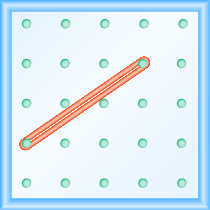
Does it look like a line?
Now we stretch one part of the rubber band straight up from the left peg and around a third peg to make the sides of a right triangle as shown in [link] . We carefully make a angle around the third peg, so that one side is vertical and the other is horizontal.
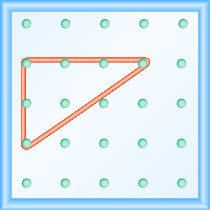
To find the slope of the line, we measure the distance along the vertical and horizontal legs of the triangle. The vertical distance is called the rise and the horizontal distance is called the run , as shown in [link] .
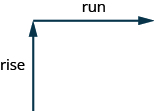
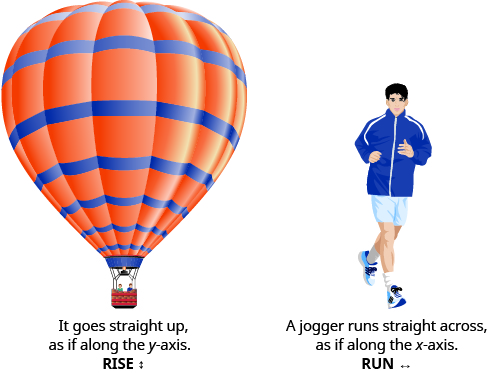
On our geoboard, the rise is units because the rubber band goes up spaces on the vertical leg. See [link] .
What is the run? Be sure to count the spaces between the pegs rather than the pegs themselves! The rubber band goes across spaces on the horizontal leg, so the run is units.
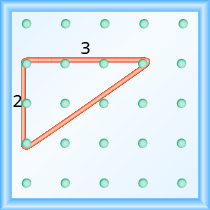
The slope of a line is the ratio of the rise to the run. So the slope of our line is In mathematics, the slope is always represented by the letter
The slope of a line is
The rise measures the vertical change and the run measures the horizontal change.
What is the slope of the line on the geoboard in [link] ?
When we work with geoboards, it is a good idea to get in the habit of starting at a peg on the left and connecting to a peg to the right. Then we stretch the rubber band to form a right triangle.
If we start by going up the rise is positive, and if we stretch it down the rise is negative. We will count the run from left to right, just like you read this paragraph, so the run will be positive.
Since the slope formula has rise over run, it may be easier to always count out the rise first and then the run.

Notification Switch
Would you like to follow the 'Prealgebra' conversation and receive update notifications?